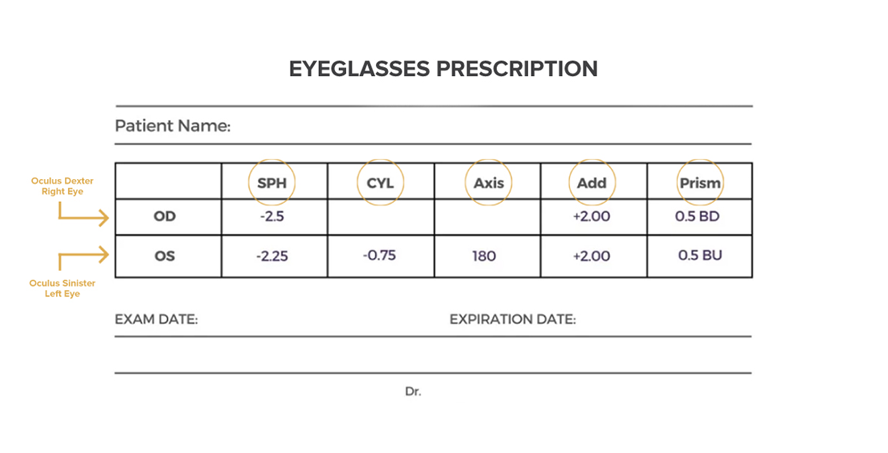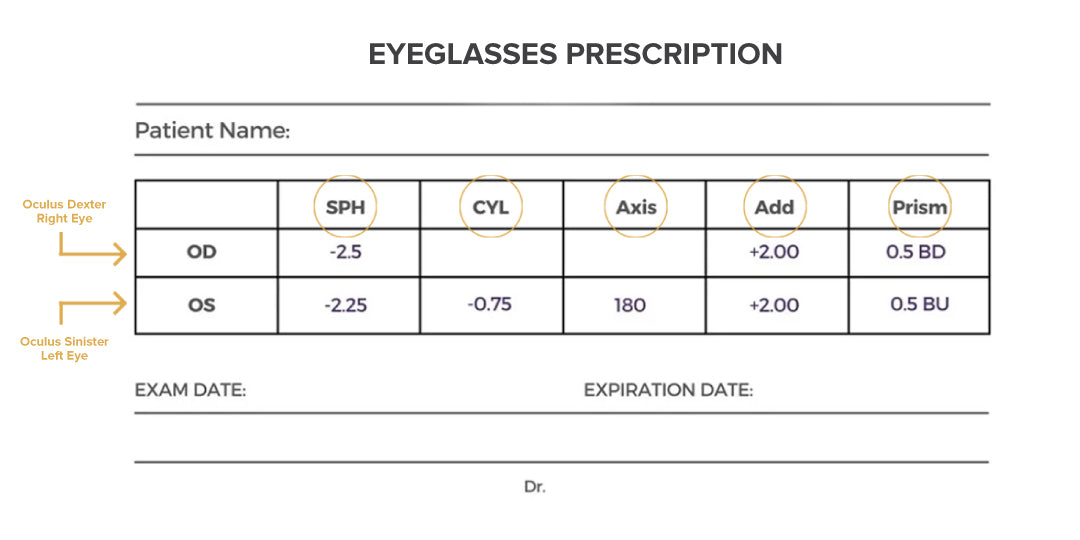

Example of what your prescription may look like.
1. Sphere (SPH):
- Indicates the main lens power to correct nearsightedness (negative values) or farsightedness (positive values).
- Written in diopters (D); the higher the number, the stronger the prescription.
2. Cylinder (CYL):
- Addresses astigmatism, a condition caused by irregular cornea or lens shape.
- Positive or negative values denote the degree of astigmatism correction needed.
3. Axis:
- Specifies the angle (in degrees) for astigmatism correction.
- Ranges from 0 to 180; helps align the cylindrical power correctly.
4. Add:
- Applies to multifocal prescriptions (bifocals, progressives) for additional power needed for reading or close work.
- Written as a positive value.
5. Prism:
- Indicates the amount of prismatic power required to correct eye alignment issues.
- May be present for conditions like strabismus.
6. Base:
- Corresponds to the base direction of the prism (up, down, in, out).
7. Pupillary Distance (PD):
- Measurement between the centers of your pupils.
- Ensures proper alignment of the optical center of the lenses with your eyes.
8. Lens Material and Coating:
- Specifies the type of material for your lenses (e.g., high-index, polycarbonate).
- Coatings may include anti-reflective, anti-scratch, or UV protection.
Example of the information provided on a prescription.
This example will help you better understand the information provided to you on your prescription.
Sample Prescription
- OD (Right Eye): -2.00 -1.25 x 180
- OS (Left Eye): -1.75 -1.50 x 90
- Add: +2.25
- PD: 64
Understanding the Sample:
- Right eye has myopia (nearsightedness) of -2.00 diopters with astigmatism of -1.25 at an axis of 180 degrees.
- Left eye has myopia of -1.75 with astigmatism of -1.50 at an axis of 90 degrees.
- Additional power for reading (+2.25) is included.
- Pupillary distance is 64.

